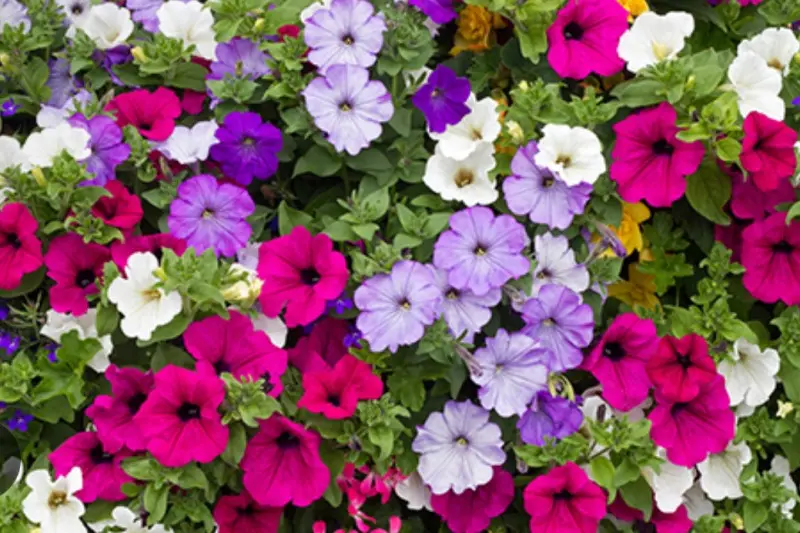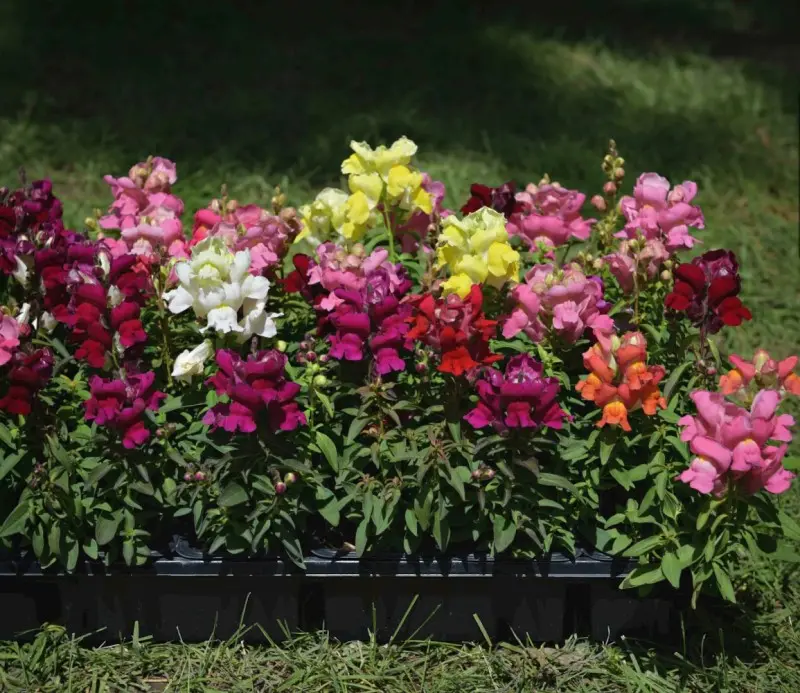-

Marigold
$0.00
Spring/Fall
6 to 36 inches tall
Deer Resistant
-
Marigold (Tagetes spp.) is a vibrant, easy-to-grow annual known for its cheerful blooms, which appear in warm shades of orange, yellow, red, and gold. Native to the Americas, marigolds are popular garden flowers that bloom from spring through fall, providing color and resilience in garden beds, borders, and containers. Marigolds are also valued for their ability to repel pests naturally, thanks to compounds in their leaves and roots, making them a great companion plant in vegetable gardens.
Marigolds typically range from 6 inches to 3 feet in height, depending on the variety. The two main types of marigolds include French Marigolds (Tagetes patula), which are compact and bushy, ideal for borders and containers, and African Marigolds (Tagetes erecta), which are larger and taller, perfect for back borders or as a colorful statement in flower beds. They thrive in USDA zones 2-11 as annuals, preferring full sun and well-draining soil, and are highly drought-tolerant once established, making them well-suited for hot, sunny spots.
Marigolds are low-maintenance and very adaptable, requiring little more than regular watering and occasional deadheading to encourage continued blooming. These plants are generally pest-free and deer-resistant, adding both beauty and functionality to gardens. With their long-lasting blooms, easy care, and pest-repelling qualities, marigolds are a versatile choice that brings color, texture, and natural pest control to a wide range of garden settings.
-

Petunias
$0.00
Spring/Fall
6 to 18 inches tall
Not Deer Resistant
-
Petunias (Petunia spp.) are popular flowering annuals loved for their colorful, trumpet-shaped blooms and long-lasting display. Native to South America, petunias come in an array of vibrant colors, including shades of purple, pink, red, white, yellow, and blue, as well as striped and bicolored varieties. Blooming from spring until the first frost, petunias are often used to add bold splashes of color to garden beds, borders, containers, hanging baskets, and window boxes.
Petunias typically grow 6 to 18 inches in height and spread 12 to 24 inches, depending on the variety. They thrive in USDA zones 9-11 as perennials but are commonly grown as annuals in most climates. Petunias prefer full sun for the best flowering display, though they can tolerate partial shade in warmer areas. They do best in well-draining, moderately fertile soil and benefit from regular watering to keep their flowers lush, especially in hot weather. Some varieties, such as Wave Petunias, are bred to be highly drought-tolerant and have a vigorous, spreading habit, making them ideal for ground cover or cascading over container edges.
Low-maintenance overall, petunias benefit from regular deadheading to encourage continuous blooms, though many modern varieties are self-cleaning. They can also benefit from periodic feeding to support their flowering. While they are generally pest-free, petunias may attract aphids or caterpillars in humid conditions. With their wide range of colors, ease of care, and ability to bloom throughout the growing season, petunias are a versatile choice that adds vibrant, season-long color to both formal and informal gardens.
-

Dianthus
$0.00
Spring/Summer/Fall/Winter
6 to 12 inches tall
Deer Resistant
-
Dianthus (Dianthus spp.), commonly known as Pinks or Carnations, is a charming flowering plant admired for its delicate, fringed petals and sweet, clove-like fragrance. Native to Europe and Asia, Dianthus comes in a range of colors, including shades of pink, red, white, purple, and bicolors. Known for its star-shaped, often ruffled blooms, Dianthus is a popular choice for garden borders, rock gardens, and containers, adding color and scent from late spring through fall.
Dianthus plants typically grow from 6 inches to 18 inches in height, depending on the variety, and feature narrow, bluish-green foliage that provides a soft, textural contrast to the flowers. These plants thrive in full sun and well-draining, alkaline soil enriched with organic matter. Although Dianthus is moderately drought-tolerant once established, it benefits from regular watering to maintain blooms, particularly during dry periods. Hardy in USDA zones 3-9, many Dianthus varieties are perennial, allowing them to return year after year, while others are grown as biennials or annuals in cooler climates.
Easy to care for, Dianthus requires minimal maintenance beyond occasional deadheading, which promotes additional blooming and prevents the plant from becoming leggy. It is generally resistant to pests and diseases but may attract occasional aphids or slugs in wet conditions. With its delightful fragrance, long-lasting blooms, and compact form, Dianthus is a versatile plant that enhances gardens with color, scent, and texture, making it a popular choice for gardeners seeking low-maintenance beauty in borders, beds, and containers.
-

Pansies
$0.00
Fall/Winter
6 to 9 inches tall
Not Deer Resistant
-
Pansies (Viola x wittrockiana) are beloved cool-season annuals known for their colorful, face-like blooms and resilience in early spring and fall gardens. Native to Europe and Western Asia, pansies produce large, rounded flowers in a wide array of colors, including purple, blue, yellow, white, orange, and red, often with unique “faces” or dark blotches at the center of each bloom. These cheerful flowers are commonly planted in beds, borders, containers, and window boxes, adding color and charm to gardens when other flowers may be dormant.
Pansies typically grow 6 to 9 inches tall and 6 to 12 inches wide, forming low, mounding plants that thrive in cool weather. They perform best in full sun to partial shade and prefer rich, well-draining soil with regular moisture. Pansies are hardy in USDA zones 6-10, often used as annuals in most regions but can act as short-lived perennials in milder climates. They are particularly suited to cooler seasons, blooming from early spring through late fall, and can even survive light frost, making them ideal for extending garden color into late fall or early winter.
Low-maintenance and easy to care for, pansies benefit from regular watering and deadheading to encourage more blooms throughout the season. They are generally resistant to pests, though they may attract slugs in damp conditions. With their bright colors, cold tolerance, and charming “faces,” pansies are a favorite for adding vibrant, long-lasting color to garden beds, pots, and borders, creating an inviting look in both spring and fall gardens.






